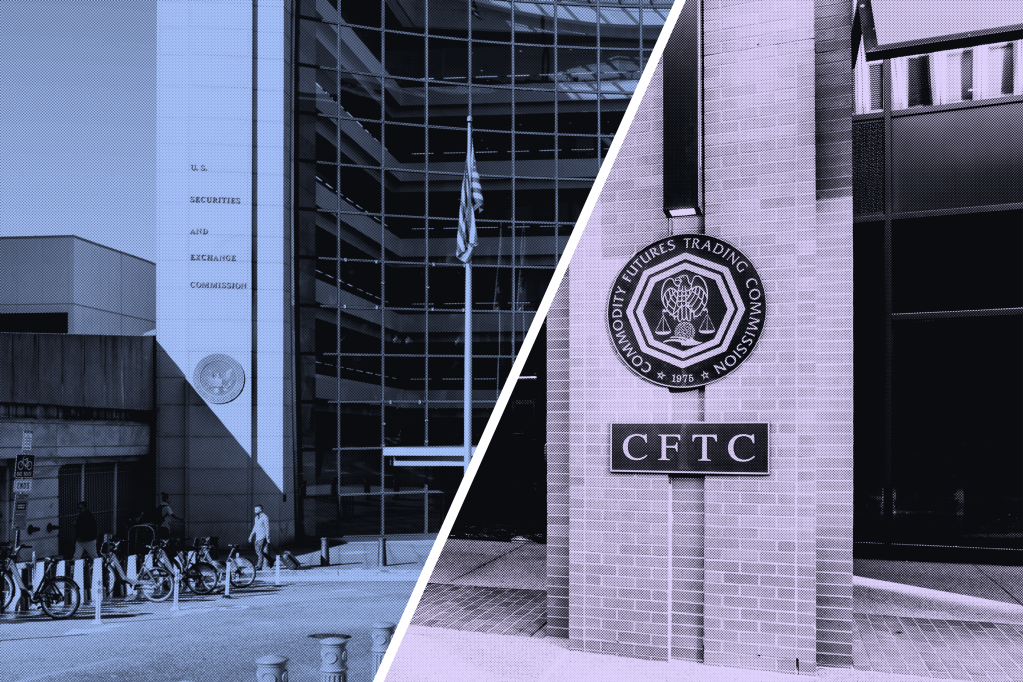The rising popularity of cryptoassets in recent years has sparked a heated debate about the growing necessity for a proper regulation of this rapidly evolving industry. Ever since the ICO bull-run of 2017/2018, regulators and policymakers around the world have been trying to find the best way in which the regulation of cryptoasset-related activities can be developed, primarily by focusing on the protection of investors from volatility risks that are very typical for this industry.
The very first contact that an average prospective investor may have with cryptoassets is often through advertising. Promotions of new coins or tokens claiming high returns or revolutionary technology have started to pop up across the board in recent years: from social media ads, and sports sponsorships to ads that one can stumble across on a bus or on the subway.
This initial exposure to aggressive marketing campaigns arguably plays an important role in shaping the expectations of an average prospective investor that may be incentivized to invest in a cryptoasset driven by emotions or fear-of-missing out (FOMO), rather than by the facts surrounding the cryptoasset in question.
Therefore, one of the first areas of concern for regulators around the world was the marketing of cryptoassets to consumers given the level of risk that uncontrolled promotion of this highly volatile asset class could pose to investor protection, and broader stability of the financial wellbeing of an average consumer.
Crypto advertising in the EU
As of December 30, 2024, the EU has become one of the first major jurisdictions with a comprehensive regulatory framework on crypto assets, based on the new EU Markets in Crypto-Assets Regulation. (MiCA). Among other rules, the MiCA Regulation also introduces a set of harmonized rules on offering of regulated crypto-assets and the provision of regulated crypto-asset services to customers based in the EU.
Historically, the EU never opted to develop a designated regulatory framework on advertising of regulated services and products specifically. Instead, some key pieces of the EU financial regulation (like MiFID II, CRD IV and Prospectus Regulation) have indirectly restricted and regulated the way in which regulated products and services can be advertised to the public by:
- imposing a license obligation on entities holding themselves as providers of regulated services and products; and
- developing comprehensive transparency and disclosure requirements applicable to public offerings of regulated products (like securities) to the public in the EU.
By following in the footsteps of its predecessors, the MiCA Regulation indirectly regulates advertising of cryptoassets by introducing a harmonized set of rules that regulate:
- offering of regulated crypto-assets to the public, and
- authorization and ongoing operation of persons providing crypto-asset services to EU customers.
The MiCA Regulation regulates offering of and provision of services in relation to the following three categories of crypto-assets:
- asset-referenced tokens (ARTs) (stablecoins whose value is pegged to the value of one or several underlying assets);
- e-money tokens (EMTs) (stablecoins whose value is pegged to the value of one fiat-currency), and
- other non-exempted crypto-assets (like bitcoin, ether etc.).
White paper
First, before offering regulated crypto assets to EU investors, an offeror (regardless of whether being EU or non-EU based) is required to prepare and publish an information document containing relevant information about the issuer, the crypto asset, associated risks, underlying technology, and the key terms of the offer (white paper).
Offerors are required to send the draft of the white paper to their national competent authorities (NCA) at least 20 days prior to publication of the offer in the EU. This simple notification procedure does not provide for an approval of the offering – the NCAs simply have the power to require amendments to the white paper or suspend the offer or trading of the crypto-assets where the white paper does not meet minimum requirements under the MiCA Regulation.
Marketing communications
In addition to the white paper obligation, offerors of cryptoassets also need to carefully design any marketing materials (like promotional banners, messages and online ads) accompanying the white paper, in compliance with the minimum requirements on marketing communications. Marketing materials have to contain only fair, clear, and non-misleading information that is consistent with the information contained in the white paper. NCAs have the power to inspect marketing materials of the offer and request adjustments to their content where they fail to meet regulatory requirements.
Bespoke regime for stablecoins
In addition to the above-mentioned white paper obligation that applies to all non-exempted offers of regulated crypto assets, there are a number of additional regulatory requirements that apply solely to offerors of AMTs and EMTs in the EU.
Besides being required to comply with additional content requirements when it comes to the white paper, offerors of ARTs are required to apply for a license and meet requirements to become an authorized issuer of ARTs under the MiCA Regulation. By a way of exemption, EU-authorized credit institutions are allowed to act as ART issuers provided they ensure compliance with minimum requirements under the MiCA Regulation.
Offering of EMTs to EU investors on the other hand, is solely possible for EU-authorized credit institutions and e-money institutions that are the only two categories of regulated entities allowed to act as EMT issuers under the MiCA Regulation.
Unlike the offering of non-exempted crypto assets, that is generally possible for both EU and non-EU based entities, offering of both ARTs and EMTs is reserved solely for EU based entities.
Crypto advertising in the UK
Unlike the EU, where the broader regulatory framework on crypto assets regulates advertising of crypto assets, the UK has historically been dealing with the topic of advertising (promotion) of regulated services and products to UK consumers rather differently.
Financial promotion restriction
Under the UK regulatory framework based on the Financial Services and Markets Act (2000) (FSMA), promotion of regulated products and services is generally subject to financial promotions restriction under s21 FSMA. To that end, any person that in the course of business, communicates “an invitation or inducement to engage in investment activity or to engage in claims management activity” must ensure compliance with the financial promotion regime (more on this below) or risk committing a criminal offence.
The scope of the financial promotion restriction is very broad and captures any sort of “invitation” or “inducement” (including website promotions, social media ads etc) to engage in investment activity (like arranging deals in investments, advising on investments, managing investments etc).
As of October 8, 2023, “qualifying crypto assets” were brought under the scope of the financial promotion restriction which applies to all firms (UK and overseas based) marketing these products to UK consumers. Qualifying crypto assets are defined quite broadly as any cryptographically secured digital representations of value or contractual rights that can be transferred, stored or traded electronically, and use technology supporting the recording or storage of data that are both fungible and transferable.
Four gateways
Under the new regime, qualifying cryptoassets can only be promoted to UK customers where the financial promotion:
- is communicated by an authorized person (for example an FCA-authorized investment firm);
- is approved by an authorized person (in compliance with the approval gateway under s 21(2A) FSMA);
- is communicated by (or on behalf) of a crypto business registered with the FCA under the Money Laundering, Terrorist Financing and Transfer of Funds (Information on the Payer) Regulations 2017 (MLRs), or
- is communicated in compliance with one of a limited number of available exemptions under the financial promotion regime.
Communicating a financial promotion in any other way than through one of the above listed gateways constitutes a breach of s21 FSMA financial promotion restriction, which is a criminal offence. The sanctions for this are imprisonment of up to two years, a monetary fine (or both). The FCA also has wide-ranging enforcement powers, including the power to: (i) issue take-down requests of websites in breach; (ii) place firms on the FCA warning list; (iii) restrict firms from engaging in an activity that constitutes the breach to prevent any further harmful promotions.
Minimum requirements
Where a person looking to communicate a financial promotion has found a suitable gateway to do so, it has to ensure compliance with minimum requirements set under the FCA Policy Statement (PS23/6) (FCA Policy Statement). With the aim of addressing the risks of misleading advertising, the FCA Policy Statement sets minimum requirements and restrictions that persons communicating financial promotions of qualifying crypto assets need to ensure compliance with, including by requiring them:
- to ensure that the content of the financial promotion is designed in a way ensuring that those receiving it remain in a position to make considered and informed decisions as to whether investing in a crypto asset in question is right for them (based on fair, clear and non-misleading information about the risks, costs, past performance and potential return on investment);
- to include a standardized risk warning (“Don’t invest unless you’re prepared to lose all the money you invest. This is a high-risk investment and you are unlikely to be protected if something goes wrong. Take two minutes to learn more“);
- not to offer any monetary or non-monetary benefits that incentivize investment in cryptoassets, such as “refer a friend” or new joiner bonuses;
The FCA Policy Statement has also introduced a minimum 24-hour cooling-off period for first time investors with a firm by prohibiting the communication of direct offer financial promotions (DOFPs) to first-time investors unless the investor has reconfirmed their request to proceed after waiting at least 24 hours.
In addition to the above-mentioned minimum requirements, the FCA Policy Statement has introduced a number of additional onboarding, due diligence and record keeping obligations that persons communicating financial promotions of qualifying crypto assets need to stay mindful of.
Conclusion
Against the backdrop of everything above mentioned, it’s fair to conclude that the regulation of advertising of crypto assets both in the EU and the UK is just a piece of a broader regulatory puzzle that the regulators and policymakers are vividly striving to complete.
While important progress has been made in introducing targeted rules which address spreading of misleading advertisements on both sides of the Channel, these measures must be seen in the context of wider regulatory frameworks as well as the relevant industry developments. As marketing techniques continue to evolve (especially in the digital marketing space) regulators will need to stay on the lookout and remain ready to respond accordingly to novel forms of marketing practices that may challenge the boundaries of the existing regulatory frameworks.
Miroslav Đurić, senior associate, is a member of the Practice Group Regulatory. He advises financial institutions and non-financial entities across a wide range of topics in the areas of banking, capital markets and payment services law.


















